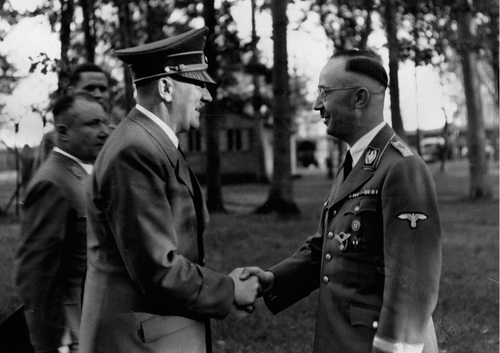When the social nationalists came to power in January 1933, the Gestapo was not created overnight. The establishing of the political police responsible for eradicating the enemies of the state was a long process.
During that process, Heinrich Himmler systematically strengthened his position and pushed through his plan of joining the police (especially the political police) with the paramilitary organisation of the NSDAP, meaning the SS (Schutzstaffeln, Protection Squadron), which he led since 1929.
The Gestapo welcomed into its ranks these police officers who sympathised with the NSDAP and were members of the party. It also accepted members of the SS and SD (Sicherheitsdienst, Security Services — headed by Heydrich). In time, they began welcoming regular policemen (first and foremost members of the Gestapo) into the SS.
Zum Schutz von Volk und Staat
The most important event in the first few months after Hitler rose to power was the fire of the German parliament building at the end of February, 1933. While it is known that the Reichstag’s fire was arson, there has been no definite proof that it was done by the communists, as the NSDAP leaders wanted everyone to believe. Nevertheless, the national socialists’ propaganda blamed the fire on them, which gave Hitler’s government an excuse to limit the citizens’ constitutional rights and introduce a state of emergency (with the approval of the Reich’s president, Hindenburg), known as the decree on The protection of the state and nation from February 28, 1933 (Die Verordnung des Reichspräsidenten zum Schutz von Volk und Staat vom 28. Februar 1933). Interestingly, the decree was never abolished — it was in power until the end of the Third Reich in 1945. From that moment forward, the swift destruction of the elements of the state of law ensued. The very elements which stood on Hitler’s way to fully grab power: independent media, independent courts and opposition parties. The aforementioned decree, among other things, abolished the privacy of correspondence and the freedom to gather, as well as enabled the detention of the Reich’s citizens under “protective arrest” — without any court order.
